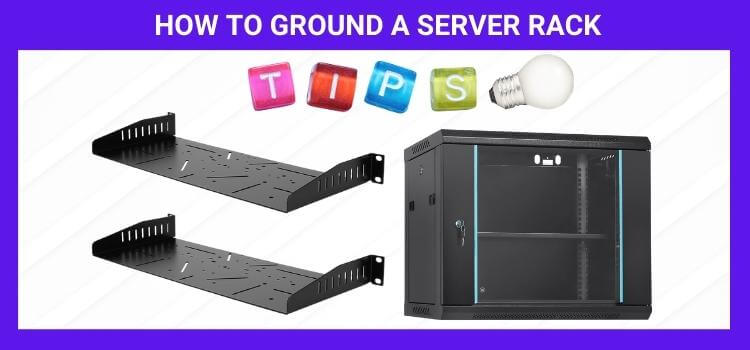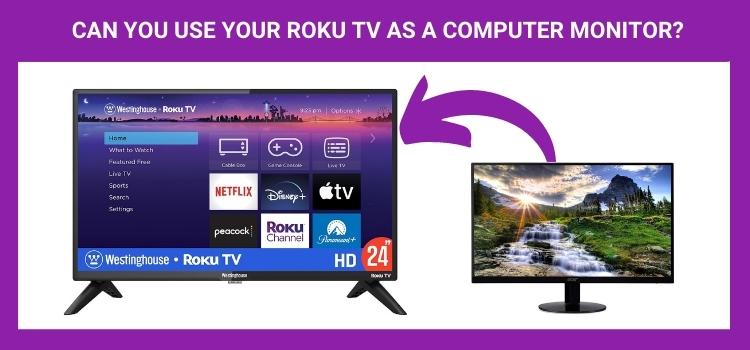As an Amazon Associate I earn from qualifying purchases.

Regarding managing server infrastructure, two critical aspects stand out: grounding the server rack for safety and shipping it securely to its destination. Whether setting up a new data center or relocating existing equipment, understanding how to safely drop and send a server rack is essential. This guide provides a detailed roadmap with actionable steps, insights, and expert advice to ensure your server rack is safe and secure throughout the process.
How to Ground a Server Rack
Grounding a server rack is essential for mitigating risks and protecting people and property. Establishing a grounding system can minimize the chances of discharge and other potential issues.
Understanding Grounding Principles
Grounding connects the server rack, components, and the earth’s surface to dissipate charges. This helps prevent voltage imbalances, which lead to equipment damage and improves reliability.
Step-by-Step Grounding Process
- Assess the Environment. Before you start, evaluate where the server rack will be placed. Make sure there is proper access to electrical outlets and grounding points.
- Select Grounding Equipment. Choose suitable grounding cables, conductive straps, and grounding bars. These components will directly connect the server rack and the grounding source.
- Identify Grounding Points. Locate designated grounding points on the server rack’s frame. These points are typically labeled and strategically positioned for optimal grounding.
- Prepare the Rack. Clean the areas where grounding connections will be made. Ensure the surfaces are free from debris, paint, or other substances that could inhibit proper conductivity.
- Connect Grounding Cables. Attach grounding cables to the designated grounding points on the server rack. Ensure secure connections and adequate contact with the metal frame.
- Connect to a Grounding Source. Connect the other end of the grounding cables to a reliable grounding source, such as a dedicated grounding rod or an established building ground.
- Test the Grounding. Verify the effectiveness of the grounding by using a grounding continuity tester. This tool will confirm that the server rack is effectively connected to the ground.
Here are some additional tips for grounding a server rack:
- Use the shortest possible grounding cables.
- Make sure all connections are secure and tight.
- Test the grounding regularly to ensure it is still effective.
These steps ensure your server rack is properly grounded and protected from electrical hazards.
How to Ship a Server Rack Safely
Shipping a server rack can be a delicate process, but following these guidelines is essential to preventing damage during transit.
Preparing for Shipping
- Assess your packaging needs. Consider the size and weight of your server rack when choosing packaging materials. Sturdy cardboard boxes, foam padding, and bubble wrap will help protect delicate components.
- Disassemble if necessary. Disassembling the server rack into smaller segments can make it easier to pack and reduce the risk of damage.
- Label fragile items. Mark any fragile components or delicate parts so that handlers know to be careful.
Packing the Server Rack
- Secure internal components. Ensure that internal components, such as hard drives and expansion cards, are well-secured or removed to prevent damage during transit.
- Use cushioning material. Place ample cushioning material, such as foam or bubble wrap, around the server rack to absorb shocks and vibrations.
- Strap and seal the package. Use heavy-duty straps to secure the server rack within the packaging and seal the box securely with packaging tape to prevent accidental openings.
Selecting a Shipping Method
- Choose a reputable carrier. Opt for a trusted and experienced shipping carrier with a track record of handling delicate and valuable items.
- Consider insurance coverage. Purchasing insurance coverage can protect your investment in the event of unforeseen damages during transit.
- Label and document the package. Clearly label the box as fragile and provide any necessary shipping documents to ensure smooth customs clearance for international shipments.
Handling Special Considerations
- International shipping: Research and comply with the destination country’s customs regulations and import/export requirements when shipping internationally.
- Temperature control: If your server rack contains sensitive components, consider temperature-controlled shipping options to prevent heat-related damage.
Common Mistakes to Avoid When Grounding and Shipping Server Racks
You should avoid a few common mistakes when grounding and shipping server racks to ensure your equipment’s safety and integrity.
Mistake 1: Neglecting Proper Grounding
One of the most critical mistakes to avoid is not paying attention to proper grounding. If you don’t correctly ground your server rack, it could be vulnerable to power surges, which can cause equipment malfunctions, data loss, and even fires. To avoid this mistake, follow the step-by-step grounding guide and double-check all connections.
Mistake 2: Poor Packaging Choices
Another common mistake is using poor packaging materials when shipping a server rack. Flimsy boxes or insufficient padding can expose your server rack to shocks, impacts, and environmental factors, which could cause severe damage. Even minor injuries can have a significant effect on the functionality of your equipment. To avoid this mistake, use sturdy packaging materials and ensure proper cushioning to protect your server rack during shipping.
Mistake 3: Neglecting Proper Labeling
Finally, you should pay attention to proper labeling when shipping a server rack. Clear labels that indicate the fragile nature of the contents or the required handling instructions will help shipping personnel treat your server rack with the necessary care. To prevent this mistake, affix clear labels that communicate the sensitivity of the contents and any special handling instructions.
By avoiding these blunders, you can ensure your server rack is grounded appropriately and delivered safely. Taking these precautions will protect your valuable equipment and minimize the risk of disruptions to your operations.
Benefits of Proper Grounding and Shipping for Server Racks
Properly grounding and shipping server racks is essential for some reasons. Here are some of the benefits:
- Enhanced equipment safety and functionality: Proper grounding reduces the risk of electrical hazards and power surges, which can damage your equipment. It also provides a pathway for excess electrical charges to dissipate harmlessly, which can improve the overall functionality of your equipment.
- Reduced downtime and data loss: Proper grounding can help prevent unexpected downtime due to equipment malfunctions caused by electrical issues. This can help protect your data center from potential data loss and disruptions.
- Equipment longevity: Proper grounding can prolong the lifespan of your server rack components. Electrical surges and static discharge can cause gradual damage over time, leading to premature equipment failure. By maintaining consistent grounding, you can extend the lifespan of your equipment and minimize the need for frequent replacements or repairs.
- Cost savings: In the long term, investing in appropriate grounding measures may result in considerable cost savings. The expenses associated with repairing or replacing damaged equipment and dealing with the aftermath of electrical issues can be substantial. You can avoid these costly scenarios by mitigating these risks through proper grounding.
- Safe and reliable shipping: Adhering to safe shipping practices ensures that your server rack arrives at its destination intact and ready for use. Protecting your equipment from shocks, impacts, and environmental factors during transit reduces the likelihood of damage. This, in turn, saves you the time, effort, and resources that would otherwise be required to address shipping-related issues.
- Peace of mind: Knowing that your server rack is grounded correctly and securely shipped provides peace of mind. You can focus on your company’s operations without worrying about unforeseen equipment failures, downtime, or shipment hiccups. This confidence in the safety and reliability of your IT infrastructure contributes to a smoother workflow.
FAQs
Grounding a server rack helps protect the stand and the equipment inside from electrical hazards. When a server rack is not correctly grounded, it can be susceptible to electrical surges and static electricity, damaging the equipment. Grounding also helps to dissipate excess electrical current, which can help prevent fires.
The steps involved in grounding a server rack are as follows:
1. Assess the environment. Make sure that there is proper access to electrical outlets and grounding points.
2. Select grounding equipment. Choose suitable grounding cables, conductive straps, and grounding bars.
3. Identify grounding points. Locate designated grounding points on the server rack’s frame.
4. Prepare the rack. Clean the areas where grounding connections will be made.
5. Connect grounding cables. Attach grounding cables to the designated grounding points on the server rack.
6. Connect to a grounding source. Connect the other end of the grounding cables to a reliable grounding source, such as a dedicated grounding rod or an established building ground.
7. Test the grounding. Verify the effectiveness of the grounding by using a grounding continuity tester.
Some common mistakes people make when grounding a server rack include:
Using the wrong type of grounding cables.
Make sure that all connections are secure and tight.
Not testing the grounding regularly to ensure it is still effective.
There are some grounding resources available online and in print. Some of these resources include:
The National Electrical Code (NEC)
The Electronic Industries Alliance (EIA)
The Telecommunications Industry Association (TIA)
To help ground your server rack, contact a qualified electrician or IT professional. These experts can aid in your requirements analysis and equipment installation for grounding.
Conclusion
Grounding and shipping server racks are critical tasks that require careful planning, attention to detail, and adherence to industry standards. You can guarantee the security of your equipment and its safe travel to its destination by following the instructions in this guide. Remember to prioritize proper grounding to safeguard against electrical hazards and consider the best shipping practices to prevent damage during transportation. Whether you’re a seasoned IT professional or a novice, this guide equips you with the knowledge you need for a successful server rack grounding and shipping experience.
Related Post
Amazon and the Amazon logo are trademarks of Amazon.com, Inc, or its affiliates.




Leave a Reply